Although sceptics around the world reject the existence of ghosts, there are also many millions of people for whom ghosts are either an uncomfortable and constant presence or a remote and threatening possibility. Those who claim to have seen a ghost agree on important particulars,  such as where ghosts might appear, what they wear, and what various aspects of the haunting indicates about their intentions. Although believers firmly associate ghosts’ appearance with those places where the person is presumed to have died, they forget that there are many institutions which deal with multiple deaths a year. They neglect the basic math of hauntings as well, and fail to realize that the many billions of people who have ever lived on the planet means that should ghosts exist, we would be hopelessly overcrowded. Those questions are not so relevant themselves, for they engage with the thorny issue of the existence of ghosts; I think the question of ghosts becomes much more interesting if we grant the premise that they exist, and then enquire why ghosts are at best terrifyingly homicidal—at least in movies, mundane, or at worst, merely inarticulate when they return to the place where they died or to see a loved one.
such as where ghosts might appear, what they wear, and what various aspects of the haunting indicates about their intentions. Although believers firmly associate ghosts’ appearance with those places where the person is presumed to have died, they forget that there are many institutions which deal with multiple deaths a year. They neglect the basic math of hauntings as well, and fail to realize that the many billions of people who have ever lived on the planet means that should ghosts exist, we would be hopelessly overcrowded. Those questions are not so relevant themselves, for they engage with the thorny issue of the existence of ghosts; I think the question of ghosts becomes much more interesting if we grant the premise that they exist, and then enquire why ghosts are at best terrifyingly homicidal—at least in movies, mundane, or at worst, merely inarticulate when they return to the place where they died or to see a loved one.
Although old houses are a favourite location for ghosts, as well as train stations and lonely paths by the river, those relatively death-free locations should be  relatively unpopulated compared to apartment buildings which have burned, hospitals where people die daily, and unspectacular turns on the highway or train tracks where a massive accident or derailing have occurred. Even the sites of massacres, such as at Wounded Knee and the Darfur Genocide, do not get as much attention from
relatively unpopulated compared to apartment buildings which have burned, hospitals where people die daily, and unspectacular turns on the highway or train tracks where a massive accident or derailing have occurred. Even the sites of massacres, such as at Wounded Knee and the Darfur Genocide, do not get as much attention from 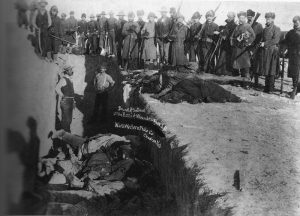 ghost-hunters as an old house, which movies have told us a much more appropriate location for a haunting. A ghost appeared to my friend Charlotte, for instance, beside her bed as she was sleeping, and she woke enough to see the apparition of an old woman in a dark coloured dress, and then went back to sleep. If the argument about location
ghost-hunters as an old house, which movies have told us a much more appropriate location for a haunting. A ghost appeared to my friend Charlotte, for instance, beside her bed as she was sleeping, and she woke enough to see the apparition of an old woman in a dark coloured dress, and then went back to sleep. If the argument about location  is as relevant as those who see ghosts suggest, she would be overwhelmed at a site like the Cambodia Killing Fields.
is as relevant as those who see ghosts suggest, she would be overwhelmed at a site like the Cambodia Killing Fields.
If the handful of deaths that an old house has seen is sufficient to tip over the ghost occupancy into occasional sightings, then the world, which has seen the deaths of many billions, should be overcrowded by spirits. In H. G. Wells’ The Time Machine he refers to an old notion by Grant Allen, that the world should be overcrowded by invisible ghosts of different time periods, although sightings tend to cluster around those of a certain time period. In “Pallinghurst Barrow” (originally published in the Illustrated London News in 1892), Grant Allen has Dr. Porter ask why it is that, “the 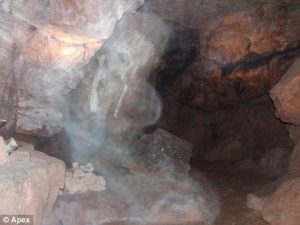 only ghosts people ever see are the ghosts of a generation very, very close to them.” People so often claim to have seen ghosts in contemporaneous clothing because they have seen pictures, but no one sees a Roman soldier’s uniform or a
only ghosts people ever see are the ghosts of a generation very, very close to them.” People so often claim to have seen ghosts in contemporaneous clothing because they have seen pictures, but no one sees a Roman soldier’s uniform or a 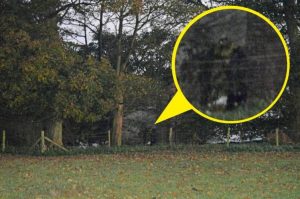 caveman’s hides. Most people see what they are familiar with; what they see is based on their understanding of history. According to this argument, it follows then that there must be legions of obsolete ghosts in the world that most people do not have the background to see, a kind of secret population that exists outside of our ability to comprehend.
caveman’s hides. Most people see what they are familiar with; what they see is based on their understanding of history. According to this argument, it follows then that there must be legions of obsolete ghosts in the world that most people do not have the background to see, a kind of secret population that exists outside of our ability to comprehend.
Walter works at Chacabuco, the haunted village in the Atacama Desert, Chile. There he reports seeing ghosts on a regular basis. Certainly the abandoned town seems like a perfect place, although when it was a saltpeter 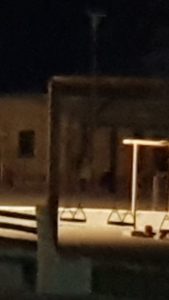 mining town there were likely few deaths, although there were at least a hundred graves in the cemetery we visited. Chileans ensure that their dead are buried some distance from a house or a town, for they believe in the proximity theory as well, even though a person who died in their home, or the mine, should not be hanging around where they were buried. Later, when Pinochet used the town as a concentration camp for dissidents, those who were shot on the grounds should also have left a number of ghosts.
mining town there were likely few deaths, although there were at least a hundred graves in the cemetery we visited. Chileans ensure that their dead are buried some distance from a house or a town, for they believe in the proximity theory as well, even though a person who died in their home, or the mine, should not be hanging around where they were buried. Later, when Pinochet used the town as a concentration camp for dissidents, those who were shot on the grounds should also have left a number of ghosts.
According to Walter, he regularly sees two old men stroll about the main square and then disappear. They appear to be as substantial as the living, although the dogs ignore them, which unfortunately runs counter to the popular belief that animals can detect the supernatural easier than humans. I was disappointed that Walter hadn’t bothered to test his ghosts by approaching them, trying his hand at a discussion, or, as would be my wont, poking them with a finger to see just how corporeal they were.
The other ghost he sees is much cuter. When Walter would go in the evenings to water the plants in the town square after the day’s fierce sun, a young girl would appear to him. Nearly every night she would stroke his shoulder when he was resting from his labours on a bench near the theatre. He said that he would merely tell her that she should go to sleep and she would go away. She appears quite frequently, and he practically guaranteed me the experience of meeting her. To back up his tale he found a photo a tourist had sent to him. The frightened traveller had been alone in the theatre taking a selfie, but when she viewed the resultant photo she found the slightly crumpled face of a woman behind her.
meeting her. To back up his tale he found a photo a tourist had sent to him. The frightened traveller had been alone in the theatre taking a selfie, but when she viewed the resultant photo she found the slightly crumpled face of a woman behind her.
I found the photo less than convincing, a grainy image of uncertain provenance, and it didn’t even serve to whet my appetite for sight of my apparition. Unfortunately, when I went down to the square alone the girl didn’t appear. I walked around the park, and then stepped into the foyer of the theatre even though it was pitch black inside and creepy. I didn’t go beyond a few metres into the yawning cavity but returned to the square to sit on Walter’s bench to await my ghost.
Once I returned without my own ghost story to add to Walter’s collection, Silvio and Walter were disappointed I didn’t see the little girl. Later, while we alternately stood and sat in front of the fire and they talked, they claimed to see ghosts pacing in front of the theatre. I saw nothing beyond the distant trees moving in the wind. It was likely nothing, but their emotionalism demanded a more vivid explanation that I wasn’t inclined to support. It we would have taken a photo, the dark and distance would have delivered the same grainy nature as the other photos Walter showed us. The complexity of shapes and dim colours mean that nearly anything could be moving near the grand theatre.
Walter provided the photos as evidence, although notably they are not the clear shots we might expect from a man who sees ghosts almost daily. Instead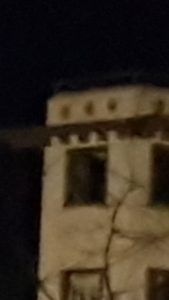 the photos are of blurry possible figures far in the distance, and one close-up where a set of arbitrary lines make an image of a face appear to be behind the woman taking the selfie. In terms of Walter’s photographic evidence, I wondered why he didn’t have a photo of the girl or the two old men. He saw them nearly every day, so surely it would have been a simple matter—while she stroked his arm—to have pulled out his phone for a shot. Not surprisingly, the photos he has are instead blurry, far away, and nearly impossible to make out.
the photos are of blurry possible figures far in the distance, and one close-up where a set of arbitrary lines make an image of a face appear to be behind the woman taking the selfie. In terms of Walter’s photographic evidence, I wondered why he didn’t have a photo of the girl or the two old men. He saw them nearly every day, so surely it would have been a simple matter—while she stroked his arm—to have pulled out his phone for a shot. Not surprisingly, the photos he has are instead blurry, far away, and nearly impossible to make out.
When considering claims about ghosts we must demand more than evidence. Proof of ghosts has not yet been found, but the stories of hauntings are themselves rather strange in how they have ghosts perform and the question of the ghost’s behaviour upon arrival is much more interesting that assertions of veracity and blurred photos.
Like we would demand from any traveller to another country we have never visited, we should ask for a cogent account of their trip. We want to know what they ate, where they slept, who they saw, and what places they visited. We are also interested in any features of the country that we know nothing about, although we leave that up to the traveller to explain. Not everyone has the patience to sit through a long traveler’s story, but if they had come back from beyond the grave, I think they could pick their spot and charge admission. Unfortunately, ghosts, or at least those who tell tales of ghosts, care little for the curiosity of the living
This “undiscover’d country from whose bourn No traveller returns,” if Shakespeare is correct, should be able to explain the afterlife in excruciating details. They should do more than hover over a point in the hallway and 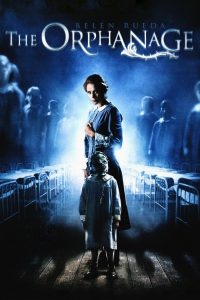 moan “Cooolllllddd” and “Daaaarrrrrkkkk”. They should be just as articulate as they were in life, and itemize for those of us still living—who have that trip ahead of us—the various steps we go through when we die. They should be able to tell us what it means to suffer the death of the body, to be transported by some system we as yet do not understand, and then go to the afterlife.
moan “Cooolllllddd” and “Daaaarrrrrkkkk”. They should be just as articulate as they were in life, and itemize for those of us still living—who have that trip ahead of us—the various steps we go through when we die. They should be able to tell us what it means to suffer the death of the body, to be transported by some system we as yet do not understand, and then go to the afterlife.
Instead, they come back with no more than a few words to their name, with less tools than they took with them, and have nothing substantive to offer their dearest friends or relatives. Those who were murdered do not even  offer to turn in their killers. Ghosts are nearly universally ineffective. Perhaps this is why films play up their active role in our affairs, because they do not have one at all, but instead are completely satisfied making the room cold, moving simple objects, and occasionally appearing as a mist or a cryptic sudden figure for a few seconds.
offer to turn in their killers. Ghosts are nearly universally ineffective. Perhaps this is why films play up their active role in our affairs, because they do not have one at all, but instead are completely satisfied making the room cold, moving simple objects, and occasionally appearing as a mist or a cryptic sudden figure for a few seconds.
Once I caught a momentary glimpse of something that I couldn’t explain; although I didn’t take the opportunity to tell the world I possessed evidence of the ineffable, I was firm in my perception, although what it meant was certainly up for debate. I had a discussion with Darryl, a pompous Queens University student, about the old man in the barn. That was my favourite story about the nature of reality and since he was already so certain about how reality worked, he was a perfect victim.
I told him of swinging in the barn, dangling from a rope affixed to the peak of the roof, and trying to grapple with and land on its narrow beam. Alone in the barn on one of these occasions, I turned with the twisting rope to see an old man, watching me, smiling pleasantly and smoking a pipe. The hair rose on the back of my neck, unhelpfully, as my body turned from my momentum, and when I reached the other side, I clung to the wall, placed my feet on the beam and slowly turned. He was gone. In his place, there was now an old coat thrown carelessly over a ladder.
When I told Darryl, I was unwisely trapped in a car with him, and he began to apply his stultified Queens intellect to the matter. “Of course,” he began, “what you really saw was . . .” and he gave a standard and slightly pedantic explanation. I told him what I had seen: an old man and a coat. The old man was of shorter duration, but was that useful criteria for truth and permanence. Reality. If someone is gone, did they exist? I could offer him a dozen such explanations, but they did little more than interpret what I had seen in more or less detail or understanding.
Perhaps the wrinkled coat, and my mind’s attention to the matter of landing on the other side of the barn combined and therefore my mind supplied the rest of the information needed to make an old man out of a coat. That would be a process similar to our brain supplying information to cover the blind spot in our vision. The blind spot trick is well  known in introduction to psychology courses, where the student holds a pencil a dozen centimetres before their eye and stare fixedly at a patterned background. After a minute or so, our brain, having lost the updated data supplied by our eye’s saccades, will cover the pencil tip with the background pattern. The tip of the pencil will effectively disappear, but few are those who take this quirk of our eye’s poor design to pretend that the pencil tip has actually disappeared, or that some supernatural force is at work.
known in introduction to psychology courses, where the student holds a pencil a dozen centimetres before their eye and stare fixedly at a patterned background. After a minute or so, our brain, having lost the updated data supplied by our eye’s saccades, will cover the pencil tip with the background pattern. The tip of the pencil will effectively disappear, but few are those who take this quirk of our eye’s poor design to pretend that the pencil tip has actually disappeared, or that some supernatural force is at work.
The question of the mind’s tricks on itself are much less interesting than the inarticulate nature of ghosts when they appear. Their inability to articulate their death experience is much more profound than debating their dubious origin. Charlotte saw a woman by the bed who said nothing. She merely was sitting beside the bed when Charlotte woke in the night, and she gave no indication that she even noticed the living except for a smile.
After her husband died, Gisele’s shower nozzle suddenly rattled against the shower stall roof. Although he had never shown any interest in the shower before, and it would have made much more sense for him to change the channels on the television, she felt that the nozzle’s abrupt movement, in which the spray went all over the shower, meant something. He was reaching from beyond the grave, although the message was cryptic enough that it could have been anything from advice on hygiene to a statement about plumbing.
Morgan “felt something” in a house which purported to be a haunted house, although other than a few sensations, he had little description to offer. Laura saw evil twisting on an ostensibly empty bed when she was a child, which didn’t come to mean anything until many years later. Megan received a phone call—unfortunately, although appropriately, on a dead phone—from beyond the grave, Kelly had her head patted when she was in agony, Mailis’ father showed up on Father’s Day to stalk silently through her darkened house.
If ghosts were to exist, at least much more solidly than these vague shapes, we would have to change everything about the way we think about the world. We would have to acknowledge that the human is not merely a 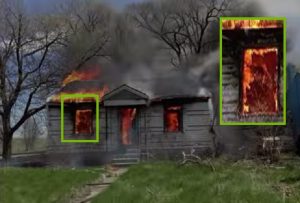 complicated meat robot, and instead possesses some hitherto ineffable essence which allows it to survive past the due date on its packaging.
complicated meat robot, and instead possesses some hitherto ineffable essence which allows it to survive past the due date on its packaging.
Like the existence of god, once someone finally proposes something even close to evidence, then the massive machinery of the scientific method, with all its creakiness and robustness, can be called in to examine the proof. That is partly done by finding more proof, and before long, such visitations would become as mundane as the use of electricity and refrigeration. The magic would disappear from the spirit world, ghosts would become a subject of study, and images of them would turn up on coasters and dish cloths, but at least we would have a reason to acknowledge their existence.
I think that we are left with the proposition that either contact is exceedingly hard to accomplish, the ghosts are not to be found where we think they should be, or the ghosts are exceedingly careless about those who care about them. Or, they don’t exist. We have to decide which answer fits more with a world where science has answered age-old questions about our lives and the universe and is undertaking to answer many more.
